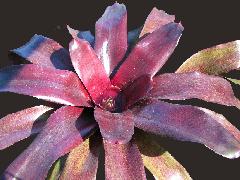
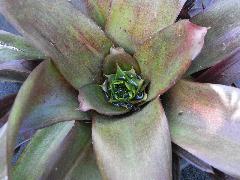
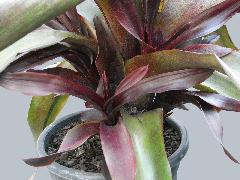
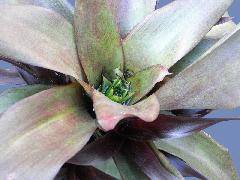
But, ARE these plants from Richard and Robyn Neoregelia Exotica Velvet ?
Robyn Firth has pointed out that the plant looks like a Neoregelia, but it has a flower more like a Nidularium.
Robyn : "I got the plant in question from Richard Harper, The Brom Place at Bellbrook in May 07. It just looks like a typical Neo till it flowers. Very small cluster of flower but with bracts. It is a large deep purple with normal neo leaves although they look different in the pups. I have given one pup to David Scott, one to Ian Hook."
It pups prolifically and the pups are dark red to black with twisted leaves.
Is it a bigeneric ? The flower certainly does NOT agree with the fcbs photo or those in Andrew Steen book.
Any information from anyone with this plant would be most welcome.
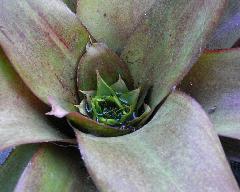
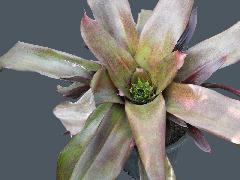
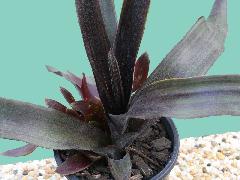
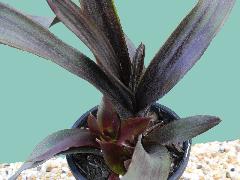
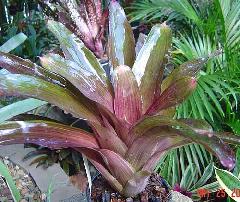
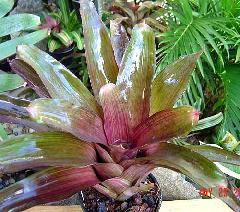
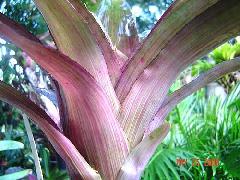
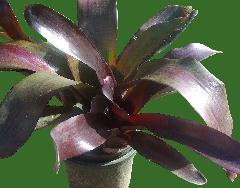
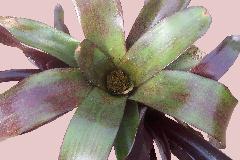
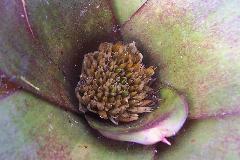
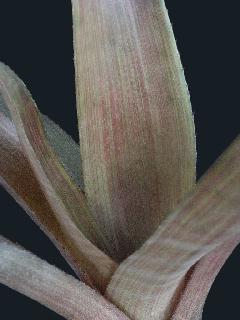
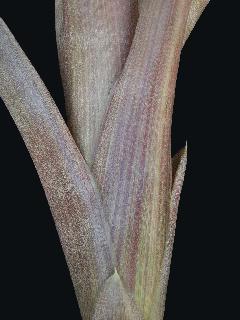
From Richard Harper to Ian Hook
"Hi Ian, these plants came in from Exotica nursery.
I have to agree though, upon flowering they did seem to me and J Koning to be a bi-genic.
The flower head seems to sit up slightly with bracts coming around and cupping the flower head. All flowering specimens have shown the same traight.
Uncle Derek has email detailed instructions to dissect the flower head, will let you know the results."
From Richard Harper:
"Hi everyone, dissected a number of flower heads and photographed. I think it is a neoregelia.
Photo's attached - Neoregelia - Nidularium - Nidregelia - Exotica Velvet, and a group Shot."
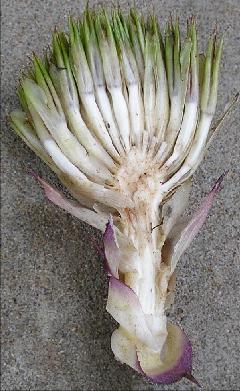
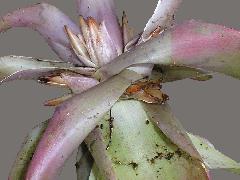
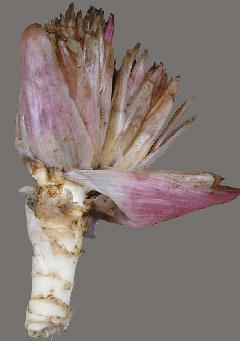
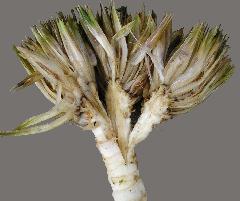
From Derek Butcher to Richard Harper:
"It was great to know that you only found one bract per flower and had an absorbing time butchering a few plants of different genera. I said on the phone that a possible candidate for one of the parents or part of a parent was Neo princeps. See the enclosed and see how different the floral bracts are from the 'normal' Neoregelia!
Derek
PS I didn't want to confuse at this stage that some Neoregelias have compound flowers too! They are rare and rarely used by hybridists!"
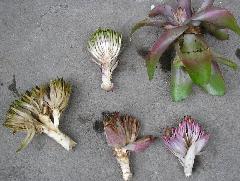
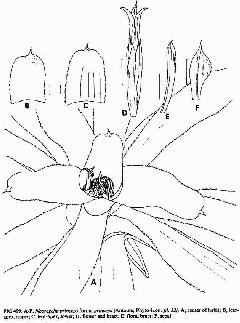
From Andrew Steens to all.
"Hi Guys. Thanks for including me in the discussion. Here are a few points here that might be of interest.
Neoregelia 'Exotica Velvet' is most definitely a Neoregelia and we've grown many thousands of them without much variation apart from the amount of maroon striping in the leaves, which can vary from pinstripes to full maroon colouring across the leaf. The FCBS and book photos are fairly typical of the cultivar.
The first photo by Richard harper is also typical of the cv, just taken at an earlier stage in the flowering process than the photo on fcbs. Whether this is indicative of N. princeps in the parentage I couldn't say, but its' quite possible. I'm not sure whether the other flowering photos on that page are the same thing at a slightly different stage or whether the following explanation is more applicable.
We've grown the majority of our plants from tissue culture, but increasing numbers are now coming from pup. One reason for producing more from pup is that the demand is gradually dropping as so many have been sold in NZ (possibly 6-7,000) and other growers are also growing this cultivar now. The other reason though is that as the culture in the lab gets older, you progressively get more and more mutations and to avoid this it is best to start again with a fresh culture. As Derek says, you can get some "extraordinary things" from tissue culture. Most of these are of no value and should be culled, but some are really interesting and/or of significant commercial value.
This is another possible explanation for what you have, ie a mutation that has caused some of the flower parts to be altered into other forms, eg petals into sepals, sepals into bracts etc. This does happen naturally in some bromeliads. A good example is Aechmea apocalyptica, which sometimes develops leaves instead of flowers and sepals. It can even produce a full size plant on top of the flower stem instead of an inflorescence. With most broms this is a temporary aberration probably caused by climatic effects. However, in your case I would guess that the mutation is permanent as a result of mutation in tissue culture. You'll know one way or the other when the next generation flowers.
For more info on the science behind some of this check out http://en.wikipedia.org/wiki/ABC_model for an introduction. I hope I haven't caused more confusion than before!"